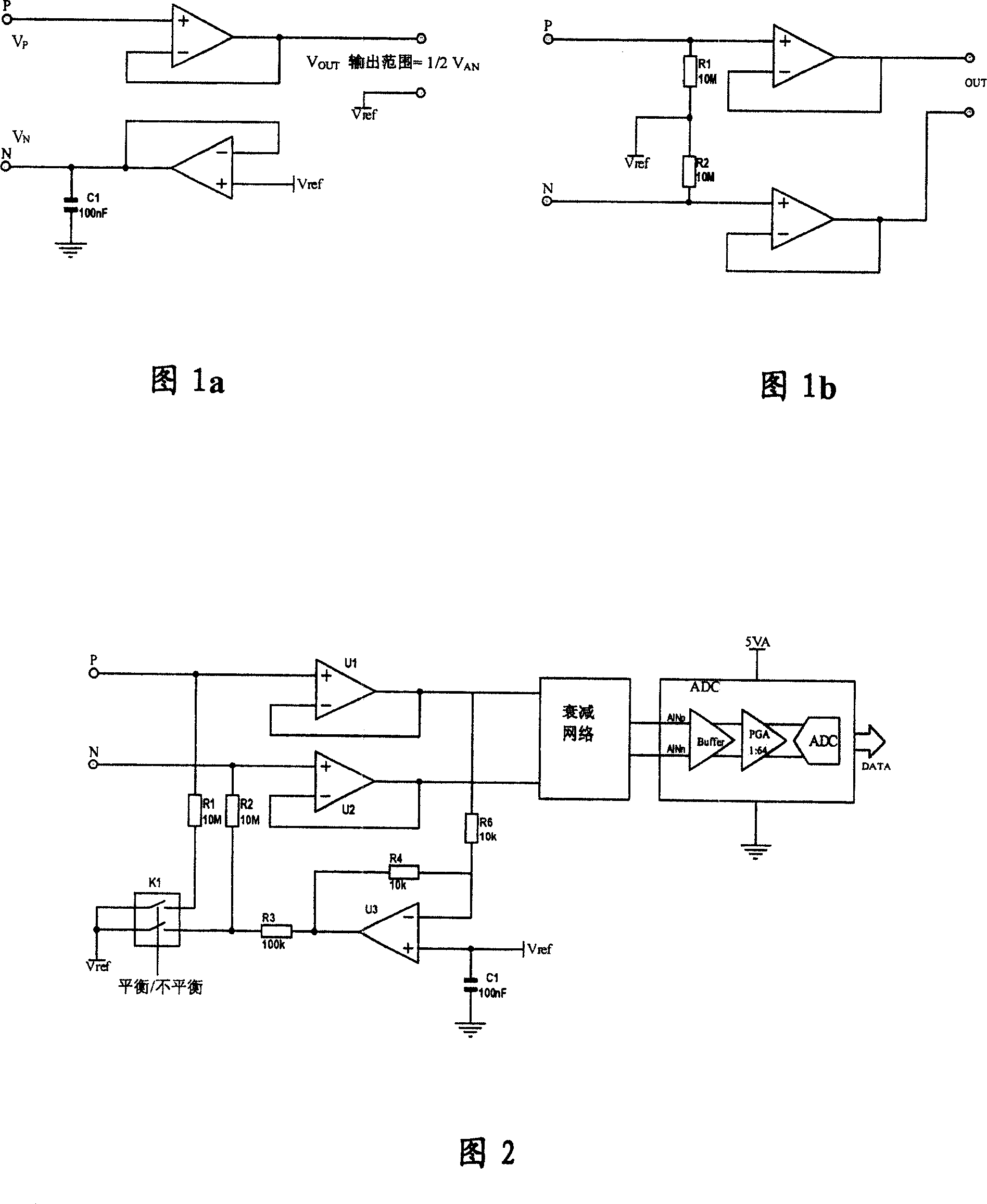Prepositive differential amplifier and method for expanding its input range
A pre-differential, input range technology, applied in differential amplifiers, DC-coupled DC amplifiers, analog-to-digital converters, etc. The effect of dynamic range
- Summary
- Abstract
- Description
- Claims
- Application Information
AI Technical Summary
Problems solved by technology
Method used
Image
Examples
Embodiment 1
[0028] The invention provides a method for extending the input range of the pre-differential amplifier. In the method, the pre-differential amplifier can be set in a balanced input mode and an unbalanced input mode by switching. It provides a wide input range and high impedance amplifier solution for the front-end amplifier design of electronic measuring instruments. For this purpose, the output of one end of the high-impedance buffer of the differential input is reversed and then fed forward to the other end (one end can be positive or negative), or the output of the differential-mode voltage of the high-impedance buffer - 1 / 2 feed forward to the inverting input. At the same time, a DC bias voltage can also be added during reverse amplification to raise the midpoint potential of the balanced input to achieve potential shifting.
Embodiment 2
[0030] The invention provides a pre-differential amplifier, which can be set to a balanced input mode and an unbalanced input mode by switching the differential amplifier. It provides a wide input range and high impedance amplifier solution for the front-end amplifier design of electronic measuring instruments. For this purpose, the output of one end of the high-impedance buffer of the differential input is reversed and then fed forward to the other end (one end can be positive or negative), or the output of the differential-mode voltage of the high-impedance buffer - 1 / 2 feed forward to the inverting input. At the same time, a DC bias voltage can also be added during reverse amplification to raise the midpoint potential of the balanced input to achieve potential shifting.
[0031] As shown in Figure 2, it is the circuit form of Embodiment 1 of the present invention: U1 and U2 are input buffer amplifiers, which adopt CMOS or JFET structure high-voltage zero-drift operational ...
Embodiment 3
[0034] As shown in Figure 3, it is the circuit form of Embodiment 3 of the present invention: U1 and U2 are input buffer amplifiers, which adopt CMOS or JFET structure high-voltage zero-drift operational amplifiers. In the circuit of Figure 3, the input buffer gain is 1. The connection form of the output feedforward amplifier U3 is shown in Figure 3. In Fig. 3, the differential mode signal output by the buffer is attenuated by G=-1 / 2 and fed back to the input terminal of U2. In the case of normal operation, the feedback amount of the two connection methods shown in Figure 2 and Figure 3 is the same, and the DC operating point is also the same, but the suppression performance of common mode noise is different. At the same time, U3 assumes the role of voltage translation, raising the midpoint potential (VP+VN) / 2 of VP and VN to VREF.
[0035] The signal after the buffer is connected to an attenuation network to ensure that the large signal does not exceed the voltage input rang...
PUM
 Login to View More
Login to View More Abstract
Description
Claims
Application Information
 Login to View More
Login to View More - R&D
- Intellectual Property
- Life Sciences
- Materials
- Tech Scout
- Unparalleled Data Quality
- Higher Quality Content
- 60% Fewer Hallucinations
Browse by: Latest US Patents, China's latest patents, Technical Efficacy Thesaurus, Application Domain, Technology Topic, Popular Technical Reports.
© 2025 PatSnap. All rights reserved.Legal|Privacy policy|Modern Slavery Act Transparency Statement|Sitemap|About US| Contact US: help@patsnap.com


